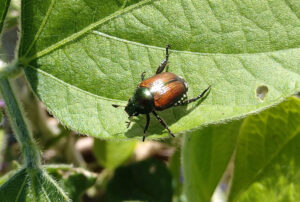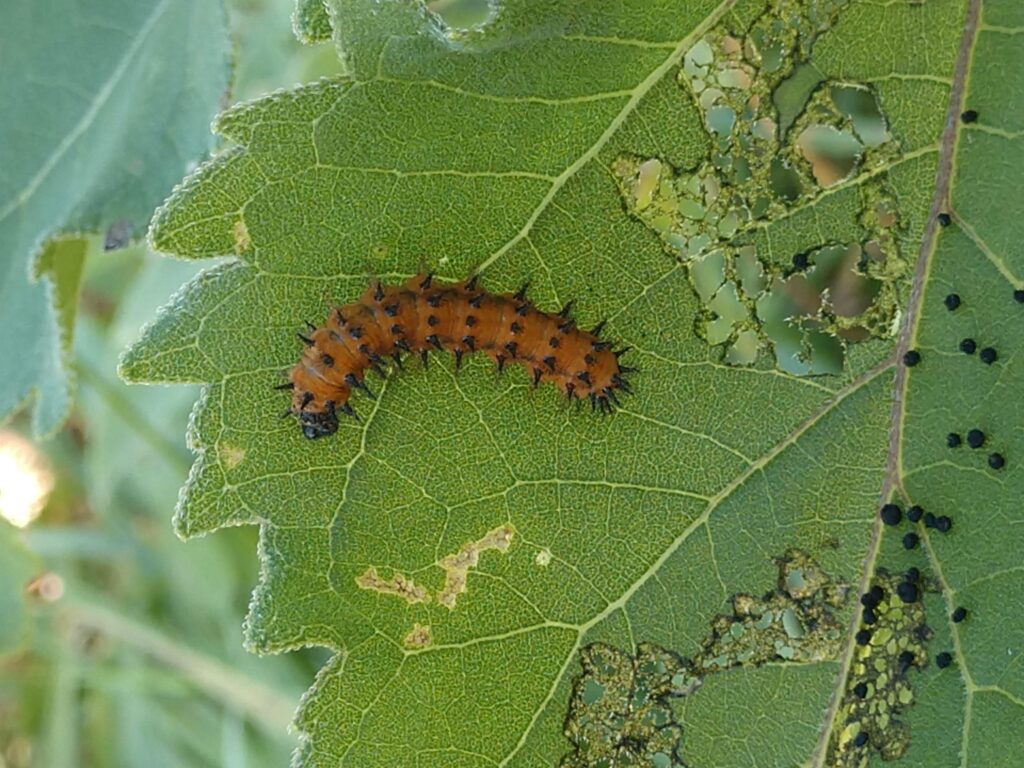WHAT IS THAT???!!?!?!
That thought has crossed my mind as I scout crops, when I accompany my son fishing, and as I walk outside along my favorite trail. I have received that question from producers after I’ve been in their fields. (And, frankly, insects have always fascinated me. I wanted to be an entomologist in grade school when all the other girls were dreaming of being fashion designers! ha!)
There are some very interesting looking critters out there!
I will focus on insects in soybeans because that is where I’ve been spending the most of my time when I’m outdoors lately. Most of the time, these guys do munch on leaves, but they aren’t at a distribution and concentration intense enough to cause worry or warrant treatment; they are either an annoyance to tolerate or novelty to be curious about. Once in a while—like this year with the thistle caterpillar—an unknown phenomenon creates an unusual proliferation of a certain species, and treatment is needed before the critter eats your livelihood.
Without further ado, let me introduce to you some peculiar looking creatures.
Green Cloverworm
This insect is almost neon green and has two white “racing” stripes down its sides. The green cloverworm is the larvae for a bland brownish moth. When you touch or bother it, the larvae wiggles around. The soybean looper looks similar, but has one less set of legs in the middle of its body, and it walks in a “loop” like an inchworm.
Japanese Beetle

This insect is a beetle with a copper colored body and shiny green head. Its antennae are feathered, and it has six white tufts on each side of its abdomen. When it feeds on leaves, it doesn’t eat the veins, creating a skeletonized or lacy look. It also likes corn silks. They tend to hang out together, so you can find these guys in groups, climbing all over each other. Japanese beetle larvae are white, c-shaped grubs with orange-brown heads.
Silver Spotted Skipper

This insect is the larvae to a brown butterfly with a silverish-white spot on its wings, hence the “silver spotted” in its name. It has a distinctive looking larvae that turns many heads, with the light green body, dark brown head, and orange “cheeks” or “eyes” that make it easy to identify.
Thistle Caterpillar

This insect is the larvae to the painted lady butterfly, whose wings are a decorative orange, brown, and white. This year, I’ve heard lots of comments about people seeing these butterflies in swarms, and picking them out of the grilles of cars in great numbers. The small larvae are darker, almost black, with small “thistles” or spikes on them. As they grow, they use webbing to wrap themselves in the leaves that they eat, creating a safe “home”. Here, their fuzzy brownish black heads work quickly to eat the leaves, leaving lots of big black frass (a cool name for poop) as they grow into more colorful, spikier caterpillars.
Gorgone Checkerspot

Okay, I’m not completely sure about this one—I found it south of Wahoo, Nebraska on a sunflower leaf. But the closest I could find was the larvae to a gorgone checkerspot butterfly, who does like sunflowers and is found in our area. He was kind of cute and was posing so beautifully that I just had to take his photo.
Soybean Gall Midge

This one is so tiny there is not a great chance you’d actually see these guys in the field. But their damage is so terrible they kill the entire plant when the larvae burrow into the base of the stem. They’re cool because they are a newly discovered species, and I just confirmed them in one of my fields. So, yeah, this is my photo, and these guys are only known to us for a couple of years now. They are the orange maggots to a striped midge fly that’s equally as tiny as its larvae.
Thanks for reading!
Photos all courtesy of Julie S. Paschold. May not be used or copied without permission of author.
